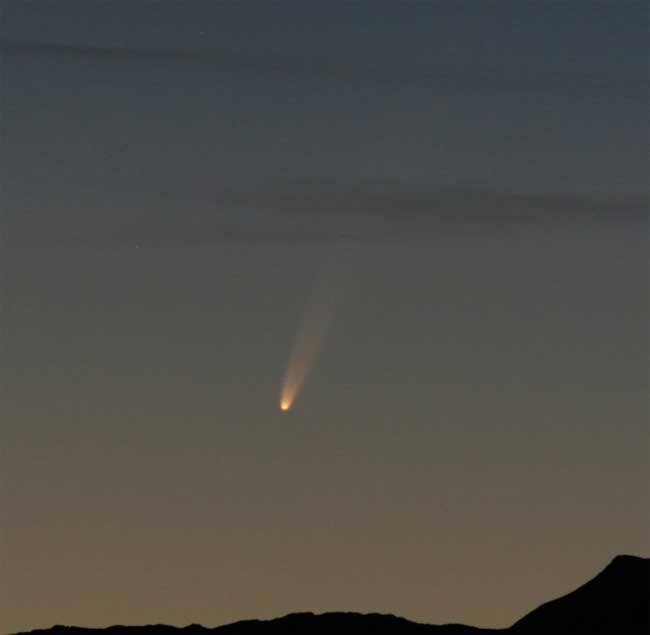Comet's Tail Tames Sun's Fury

A satellite's chance encounter with a comet has netted some surprising results.
In 2004, the NASA and European Space Agency spacecraft Ulysses unexpectedly flew through the tail of Comet McNaught. Readings from probe's Solar Wind Ion Composition Spectrometer (SWICS) showed the comet tail slowed down the solar wind, a stream of charged particles which the sun constantly pumps out.
Solar wind particles outside the comet tail zipped through space at about 435 miles per second (700 kilometers per second), but slowed to 249 miles per second (400 kilometers per second) inside.
The study, detailed in the Oct. 1 issue of Astrophysical Journal, also found the comet tail acted as a source of electrons for the solar wind.
The solar wind consists of charged atoms that are missing most of their electrons, but Ulysses found that solar wind particles passing through the comet's atmosphere could regain some of those electrons. The particles exhibit a different charge when they do this, which SWICS can detect.
Both findings are a surprise to scientists. Thomas Zurbuchen, a study team member at the University of Michigan (U-M), likened Ulysses' pass through the comet tail to putting your hand in the waters of Lake Michigan and pulling out a fish.
"That's a pretty unlikely thing," Zurbuchen said. "And that is a lot like what happened when we caught the tail of a comet that happened to pass very near the sun."
Get the Space.com Newsletter
Breaking space news, the latest updates on rocket launches, skywatching events and more!
The new results contrast with observations made in 1996, when Ulysses passed through the tail of another comet, Hyakutake. That encounter did not reveal the comet tail to have any effect on solar wind speed at all.
Ulysses passed through McNaught and another comet called SOHO (named after the spacecraft) in 2004 after a chance eruption of particles from the surface of the sun, called a coronal mass ejection, carried cometary material to the spacecraft.
Another study announced today showed a solar storm can rip the tail off a comet.
- IMAGE GALLERY: Great Comets
- IMAGE GALLERY: Deep Impact Collides With Tempel 1
- VIDEO: Comets Through Time: Myths and Mystery
Join our Space Forums to keep talking space on the latest missions, night sky and more! And if you have a news tip, correction or comment, let us know at: community@space.com.

Space.com is the premier source of space exploration, innovation and astronomy news, chronicling (and celebrating) humanity's ongoing expansion across the final frontier. Originally founded in 1999, Space.com is, and always has been, the passion of writers and editors who are space fans and also trained journalists. Our current news team consists of Editor-in-Chief Tariq Malik; Editor Hanneke Weitering, Senior Space Writer Mike Wall; Senior Writer Meghan Bartels; Senior Writer Chelsea Gohd, Senior Writer Tereza Pultarova and Staff Writer Alexander Cox, focusing on e-commerce. Senior Producer Steve Spaleta oversees our space videos, with Diana Whitcroft as our Social Media Editor.









